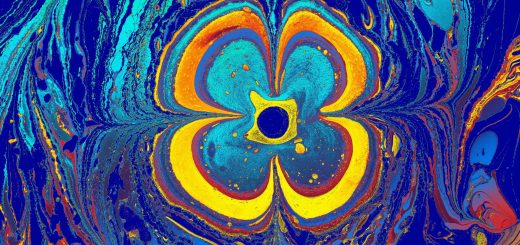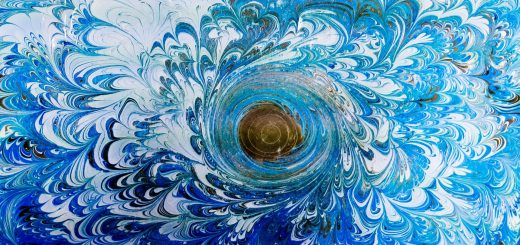Who Were the Anunnaki in Mythology?

Before diving in, please note: This post is for informational purposes only. If you’d like to know more about how we approach topics, feel free to check out our friendly Disclaimer Page.
Hey there, amazing readers! 🖐️ Just a quick note: yes, we know there are a lot of ads here. Trust us, we get it—it’s not the prettiest look, but they help us keep this blog alive and kicking. Those pesky little ads cover the costs of all the behind-the-scenes magic, from hosting and tech stuff to creating content we hope you’ll love.
We’re committed to delivering quality posts, and your support (even just sticking around despite the ads) means everything to us. So, bear with us, and thanks for helping us keep the good vibes rolling. Now, on to the fun stuff! 😉
TRANSLATE BUTTON AT THE END OF THE ARTICLE
A Quick Overview
The Anunnaki have sparked intrigue and fascination for centuries, primarily through their connections to ancient myths and legends.
If you’ve ever stumbled upon discussions about extraterrestrial beings or ancient astronauts, chances are the Anunnaki were mentioned.
But who exactly are these enigmatic figures?
In this article, we’ll delve deep into the origins, roles, and modern interpretations of the Anunnaki in mythology, painting a vivid picture of their significance throughout history.
Unearthing the Mysteries of the Anunnaki Legends
The Anunnaki conjure images of gods and otherworldly beings, but their stories are deeply rooted in the soil of ancient Mesopotamia.
Often seen as divine figures, they occupy a crucial role within Sumerian, Akkadian, and Babylonian mythology.
Their legends weave a narrative that spans thousands of years, showcasing not only their divine attributes but also their interactions with humanity.
These beings were thought to have descended from the heavens, representing various aspects of life.
They controlled aspects like agriculture, war, and the cosmos.
Imagine a cosmic board of directors, each taking charge of a different department!
This makes the Anunnaki not just deities but integral to the fabric of daily life in ancient cultures.
The myths surrounding the Anunnaki can often feel like ancient soap operas, filled with drama, betrayal, and cosmic power struggles.
As we sift through these tales, we see glimpses of the human condition reflected back at us, showcasing timeless themes of creation, destruction, and longing for connection.
The Origins of the Anunnaki in Ancient Sumer
The story of the Anunnaki begins in Sumer, one of the earliest cradles of civilization, located in present-day southern Iraq.
Scholars believe the term "Anunnaki" can be traced back to the Sumerian language, where it roughly means "those who came down from heaven." Isn’t that poetic?
These ancient texts reveal a rich tapestry of beliefs surrounding the Anunnaki.
They were often associated with specific cities, elevating their status among the people.
For instance, the city of Ur had its patron deity, Nanna, also known as Sin, among the Anunnaki.
This connection anchored divine authority directly to the city’s governance and societal structure.
Interestingly, the Anunnaki were not uniform in their portrayal.
Some texts depict them as benevolent beings who guided humanity, while others paint them as fearsome entities demanding respect and sacrifices.
Such duality echoes in many mythologies across cultures, where gods are neither wholly good nor purely evil.
Who Were the Anunnaki? A Brief Overview
At their core, the Anunnaki are often viewed as a pantheon of gods, each possessing unique characteristics and domains.
They weren’t just static figures; they had layers, just like people!
The most prominent among them include Enlil, the god of air and storms; Enki, the god of water and wisdom; and Inanna, the goddess of love and war.
Their narratives often emphasize the relationships between these deities, highlighting the tensions and alliances that would arise.
For instance, Enki and Enlil frequently clashed over differing philosophies regarding humanity.
Enki, with his nurturing demeanor, wanted to aid humankind, while Enlil often viewed them as flawed creations that required strict control.
These dynamics create a rich narrative backdrop that resonates with human experiences, making the Anunnaki relatable figures despite their otherworldly origins.
They embody desires, conflicts, and virtues that reflect our own lives, making their stories timeless.
Anunnaki: The Divine Beings of Sumerian Mythology
The Anunnaki were perceived as divine beings imbued with immense power.
They wielded authority over nature and human affairs, influencing everything from harvests to wars.
In Sumerian thought, the well-being of society was tied directly to the favor of the Anunnaki.
A good harvest?
Thank the gods!
A drought?
Well, maybe a little too much hubris.
The construction of ziggurats, grand step-like temples, served as physical manifestations of this relationship.
These structures were not just architectural feats; they represented a bridge between the earthly and the divine.
Sacrifices and offerings made at these temples were acts of devotion, aimed at appeasing the Anunnaki and ensuring their blessing.
One of the most fascinating aspects of the Anunnaki is their representation in art and literature.
They were often depicted wearing elaborate headdresses or seated on thrones, symbolizing their elevated status.
Iconography related to the Anunnaki makes their presence visually striking, reminding us that they were not just abstract concepts but part of the tangible world.
The Role of Anunnaki in Creation Myths
Creation myths are essential in understanding how ancient cultures perceived their origins.
The Anunnaki play a pivotal role in Sumerian creation narratives.
One prominent story is the Enuma Elish, which describes how the gods, including the Anunnaki, collaborated to shape the world and establish order from chaos.
In these myths, the Anunnaki often create humanity to serve them, reflecting the belief that humans were designed for labor and worship.
However, this narrative has layers.
It also raises questions about autonomy and purpose.
Are we merely servants to the gods, or do we have our own significance?
This tension between divine intention and human independence enriches the mythological landscape.
Through various tales, we see the Anunnaki take part in both the creation and destruction of civilizations.
They can be seen as catalysts for change, reminding us that creation is often accompanied by upheaval.
Just as night gives way to dawn, the Anunnaki’s actions brought forth new eras, often at great cost.
Exploring the Anunnaki’s Connection to Humanity
One aspect that makes the Anunnaki truly captivating is their connection with humanity.
In Sumerian thought, humans were created from clay, infused with the breath of the gods.
This intimate act of creation implies a kinship between the divine and the mortal.
It’s as if the Anunnaki said, “You’re one of us!”
This relationship wasn’t just about reverence; it was reciprocal.
Humans sought to honor the Anunnaki through rituals and offerings, while the gods, in turn, guided and protected them.
The idea of reciprocity reflects a universal theme in many cultures: the balance between giving and receiving.
However, the Anunnaki’s relationship with humanity was not without its challenges.
As humans grew in number and complexity, the gods found them increasingly troublesome.
In some myths, the Anunnaki decided to send a great flood to cleanse the Earth of humanity’s sins.
This mirrors other flood myths, like Noah’s Ark, indicating an archetypal story that transcends cultures.
Epic Tales: Anunnaki in Sumerian Literature
Sumerian literature is rich with tales featuring the Anunnaki.
The Epic of Gilgamesh, one of the oldest known works of literature, includes interactions between Gilgamesh and various Anunnaki.
Their roles often symbolize guidance, wisdom, or obstacles on the path to heroism.
In the epic, the Anunnaki provide counsel to Gilgamesh, helping him navigate the complexities of life and mortality.
This mentorship is vital, showcasing the idea that even divine beings can play a role in shaping human destiny.
It highlights the significance of wisdom, urging readers to seek knowledge and understanding in their own lives.
These stories are not just ancient fables; they serve as reflections of human aspirations and fears.
They remind us that we all face challenges and that guidance—whether from the divine or our peers—can illuminate our paths.
Understanding the Anunnaki Pantheon and Hierarchy
The Anunnaki pantheon is a complex hierarchy, reminiscent of a royal family, with each member having a specific role and domain.
Enlil often stands at the top, wielding authority over air and storms.
Enki, his brother, is seen as the wisdom bringer and caregiver.
Meanwhile, Inanna, the fierce goddess of love and war, represents the unpredictable nature of life and desire.
This hierarchy suggests a well-ordered cosmos where every entity has its place.
Yet, tension often arises between these figures, showcasing a dynamic interplay of power and influence.
These relationships reflect the human experience, with their complexities resonating deeply within our own social structures.
The themes of power struggles are not just intriguing; they serve as valuable lessons.
They show us that authority can shift, alliances can change, and relationships can be both nurturing and destructive.
Just like in our friendships and workplaces, understanding the Anunnaki dynamics can shed light on our own interactions.
How Anunnaki Influence Modern Popular Culture
You might wonder how ancient beings like the Anunnaki find their way into our modern lives.
Well, they’ve slipped into popular culture in fascinating ways!
From movies to books and even conspiracy theories, the Anunnaki continue to captivate our imagination.
For example, they often appear in science fiction narratives that explore themes of extraterrestrial life.
Movies like “Prometheus” nod to these ancient myths, suggesting that advanced beings may have shaped human evolution.
Similarly, books like “Chariots of the Gods?” by Erich von Däniken posit that the Anunnaki were ancient astronauts who interacted with early civilizations.
This blend of mythology and modern storytelling creates a bridge between past and present.
It invites us to consider how our understanding of humanity’s origins continues to evolve.
Who knows?
Perhaps the Anunnaki are not just relics of ancient tales but keys to deciphering our own existence.
Theories Behind Anunnaki and Extraterrestrial Origins
One of the most intriguing theories surrounding the Anunnaki is their potential extraterrestrial origins.
Some believe that these beings were not just mythological figures but visitors from another planet.
This idea gained traction in the 20th century with authors like Zecharia Sitchin, who argued that the Anunnaki came from a hypothetical planet called Nibiru.
Sitchin’s theories, while controversial, sparked interest and debate.
They suggest that the Anunnaki engaged in genetic engineering, creating humanity as a slave race to mine gold.
While mainstream scholars largely reject these ideas, they highlight our fascination with the unknown and our quest for understanding.
This theory taps into our collective curiosity about our origins and the possibility of life beyond Earth.
The allure of the Anunnaki as extraterrestrial beings invites us to explore the cosmos and question our place within it.
The Anunnaki’s Legacy in Today’s World
The legacy of the Anunnaki persists in various forms today.
Their stories have been adapted and reinterpreted in literature, art, and even spirituality.
Many people draw inspiration from their narratives, using them as metaphors for personal growth and transformation.
The Anunnaki also remind us of the importance of mythology in shaping culture.
These tales transcend time, offering insights into human nature, ethics, and the mysteries of existence.
As we grapple with modern challenges, the lessons embedded in their stories resonate deeply, urging us to seek balance and understanding.
Moreover, the fascination with the Anunnaki serves as a testament to our enduring curiosity.
It reflects our desire to connect with our past and explore the potential of the future.
Whether through academic study or creative exploration, the Anunnaki’s influence continues to inspire and provoke thought.
Celebrating the Fascination with Anunnaki History!
The Anunnaki remind us of the richness of human history and mythology.
Their tales are not just ancient stories; they are reflections of our own hopes, fears, and questions.
From creation myths to epic adventures, the Anunnaki weave a narrative that speaks to the heart of what it means to be human.
As we explore their legacy, let’s celebrate the diverse interpretations and the enduring fascination they evoke.
Whether we view them as divine beings, extraterrestrial visitors, or symbols of our own struggles, the Anunnaki invite us to ponder our place in the cosmos.
So, who were the Anunnaki?
They were more than just characters in ancient texts; they were mirrors reflecting the complexities of existence.
And as long as we continue to tell their stories, their legacy will live on, inspiring generations to come.
Conclusion
The Anunnaki remain an intriguing subject, bridging the gap between ancient mythology and contemporary thought.
Their stories reflect our innate desire to understand our origins and our connection to the cosmos.
By exploring their myths and legacies, we not only uncover the past but also enrich our understanding of the human experience.
So, let’s keep the conversation going and celebrate the fascinating world of the Anunnaki!

The Enlightenment Journey is a remarkable collection of writings authored by a distinguished group of experts in the fields of spirituality, new age, and esoteric knowledge.
This anthology features a diverse assembly of well-experienced authors who bring their profound insights and credible perspectives to the forefront.
Each contributor possesses a wealth of knowledge and wisdom, making them authorities in their respective domains.
Together, they offer readers a transformative journey into the realms of spiritual growth, self-discovery, and esoteric enlightenment.
The Enlightenment Journey is a testament to the collective expertise of these luminaries, providing readers with a rich tapestry of ideas and information to illuminate their spiritual path.
Our Diverse Expertise 🌟
While our primary focus is on spirituality and esotericism, we are equally passionate about exploring a wide range of other topics and niches 🌍📚. Our experienced team is dedicated to delivering high-quality, informative content across various subjects ✨.
To ensure we provide the most accurate and valuable insights, we collaborate with trusted experts in their respective domains 🧑🏫👩🏫. This allows us to offer well-rounded perspectives and knowledge to our readers.
Our blog originally focused on spirituality and metaphysics, but we’ve since expanded to cover a wide range of niches. Don’t worry—we continue to publish a lot of articles on spirituality! Frequently visit our blog to explore our diverse content and stay tuned for more insightful reads.





